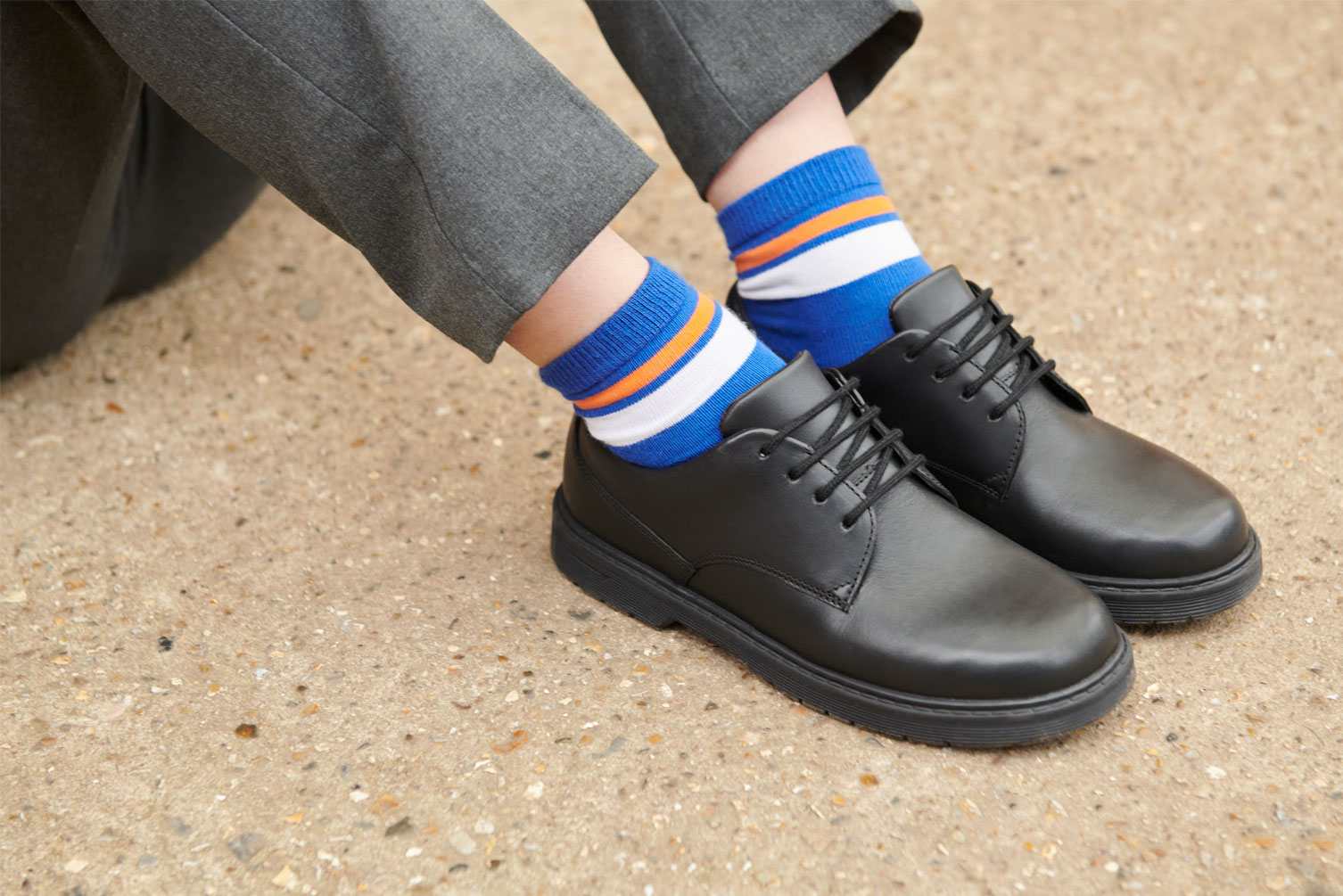
Every single parent wants their child’s school shoes to last, at very least, one full term and that is around 13 weeks, or three months. Unfortunately, many pairs of school shoes that you can pick up on the high street will only last, at best, half a term: six weeks.
Repeatedly buying shoes, no matter if they are on the cheaper side, can get costly and be a waste of your time. But, most importantly, while those shoes are degrading over the short period of time, they will be affecting how the child is walking and developing. Continually making a child wear a weak or misshapen shoe can have a long-term effect on their body.
It is well worth investing in a pair of durable shoes that will last longer, reduce the repeat visits to the shops and most importantly, protect those little feet and the body above for the duration of their use.
But how do you ensure you choose shoes that are fit for purpose?
This might seem obvious, but different foot shapes will better fit different shoe styles. The right style for the shape of the foot and the correct measurement are two important elements that will help the shoes last longer. Ill-fitting shoes will wear quicker and will rub and damage the foot in the process. For example, for high insteps or particularly wide feet look for manufacturers that include scope for adjustability, such as rip-tape, buckles or laces. Get to know the natural shape of your child’s foot when they start school as this will help minimise the options and make the buying process so much smoother too. If you buy online and not instore use our 8-point Check-The-Fit guide for reassurance.
Every school term, get your child’s feet measured by a professional fitter. This is a skill and a professional shoe fitter will have been trained in the process. There are many measuring apps online, and it is wise to invest in a plastic foot measure to keep at home to be confident in your online purchases. Quality fitted footwear also comes in a range of widths, so it’s advisable to check the fit with a professional every school term for complete peace of mind that you are measuring correctly.
Not many people realise that there is no strict standardised size across brands for shoes because, just like with clothes, the fit can vary between style. Shoes must be worn to check the fit before purchase. Quality manufacturers will shape differently to enhance the experience and durability of the shoe. For example, Start-Rite shoes are designed specifically for the shape of children’s feet and include ‘growing room’. This doesn’t mean that you get two sizes for the price of one! It means the shoes are designed with more room for toes to spread and flex inside. To enable this extra room, Start-Rite shoes are designed to hold the foot well from the back. Toes will not be squashed and as the foot grows, the shoe shouldn’t rub.
The ‘cost per wear’ is a revealing way to understand what value you get from shoes. Put simply, the more wears per pair, the more value for money.
For example, if a pair of shoes cost £20 and lasts half a term, and a pair cost £40 and last a full term, then the ‘cost per wear’ will be the same.
The longer the quality shoes last, into term two and three, the cost per wear will decrease and your investment will improve. Put simply, if you keep having to replace lower quality shoes, then you will spend more money on them in the long run. Buy better, buy once. Time and again, wear trials have shown Start-Rite shoes out last high street shoes by four times. And, because, they are not four times more expensive to buy, the Start-Rite shoes provide better value for money, have saved you time and hassle and have protected your child throughout their lifespan.
Also consider how to maximise the wears by choosing a style that can be worn on weekends and through the holidays. Chelsea boots and trainer styles are a great example of popular ‘cross-over’ styles.
Active children love to test their shoes to the limit! Does your little one scuff the toe of their shoe along the pavement to act as a brake pad as they scoot to school? Do they kick balls and take off their shoes using the other foot pushing at the heel? Of course they do! There are certain elements that you should look for in a shoe to provide a little extra durability.
Consider scuff resistant heel and toe bumpers and sole units that wrap around the whole shoe.
Soles should be lightweight and flexible (you should be able to flex between your hands by pushing the toe towards the heel). This enables natural movement for the big toe and arch and most importantly healthy physical development.
Added extras in quality fitted footwear include breathable mesh linings, innovative air flow technology and padded ankles for added comfort and support.
Author: Vista, published 15-06-2023.